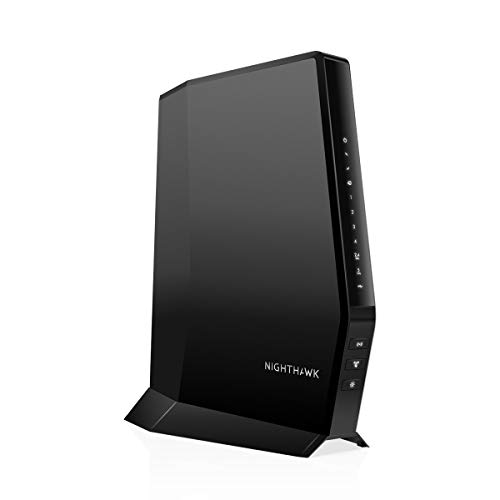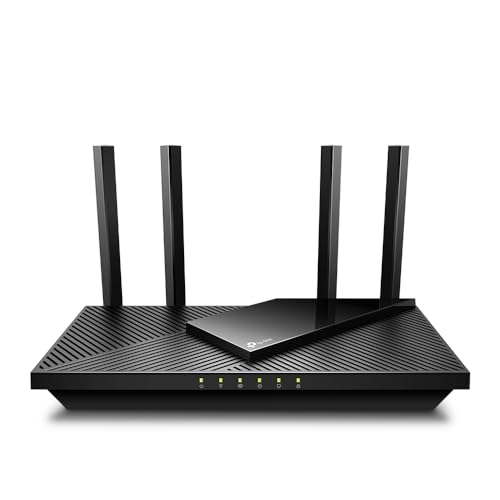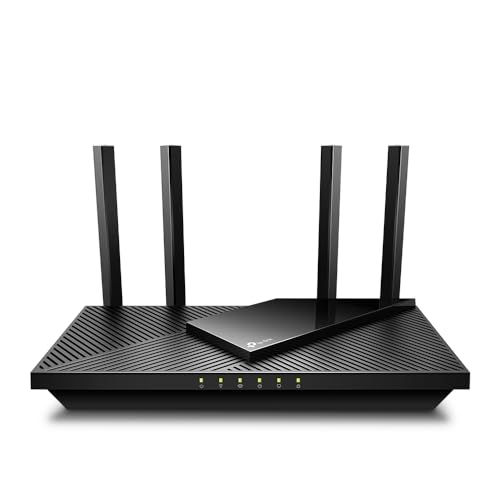How Does Beamforming Improve Network Service. Beamforming technology improves network service by focusing wireless signals directly toward a specific device, increasing speed and reducing interference. Beamforming takes advantage of the multiple antennas in a wireless device to create a stronger, more reliable connection between the device and the network.
This technology is becoming a significant tool in improving network performance in various industries, including the internet of things (iot), virtual reality, and autonomous driving. Beamforming works by finding the optimal path for a signal to travel to a device and then directing signals along that path to create a strong connection, resulting in faster download and upload speeds. In this article, we will discuss the benefits of beamforming and how it plays a critical role in enhancing network service.
Define Beamforming
Beamforming is a signal processing technique used in wireless communication networks to improve transmission and reception performance. This technology enables transmitting and receiving antennas to focus on specific directions by aligning the phase and amplitude of the signals, boosting the overall network performance.
Explain Why It Matters In Network Service
Beamforming technology significantly enhances the capabilities of wireless networks in terms of range, signal strength, and data transfer speed.
- Improved signal strength: beamforming technology helps to increase the wireless signal strength, resulting in higher network throughput, clearer voice calls, and more reliable communication.
- Increased range: by focusing signals toward the intended recipient and avoiding interference from other sources, beamforming can extend the range coverage of wireless networks.
- Higher data transfer speed: beamforming enables devices in a network to effectively communicate with each other, leading to more efficient data transmission and faster download/upload speed, especially in areas with high network congestion.
- Reduced network interference: directional signals can help mitigate the effects of network interference caused by other devices, resulting in fewer network disruptions and improved overall network reliability.
With its ability to enhance network signals and increase network performance, beamforming plays a vital role in improving the quality of wireless network services.
What Is The Science Behind Beamforming?
Beamforming, a recent wireless communication technology, is becoming increasingly widespread, leading to significant improvements in network service. Moreover, it enables multiple users to connect to the network for streaming videos, music, gaming, and an undisrupted internet browsing experience. In this section, we will discuss the science behind beamforming, how it enhances network service, and the principles underlying this technology.
What is Beamforming WiFi?
Beamforming WiFi is a technology that improves the speed and coverage of wireless networks. It uses an array of antennas to direct signals towards specific devices, instead of broadcasting them in all directions. This technique results in a more efficient transmission, as it minimizes interference and noise.
The main advantage of beamforming WiFi is the increase in network performance. By directing signals towards the intended devices, this technology enhances the signal strength and reduces packet loss. This translates into faster download and upload speeds, smoother video streaming, and better online gaming experiences.
Another benefit of beamforming WiFi is its ability to extend the range of wireless networks. Since it focuses signals on specific areas or devices, it can penetrate through walls and obstacles with greater ease than traditional WiFi systems. This means that users can enjoy seamless connectivity throughout their homes or offices without having to worry about dead zones or weak signals.
Discuss The Concepts Of Electromagnetic Radiation And Wave Propagation
Electromagnetic radiation is a type of energy that propagates through space by transmitting electromagnetic waves. Electromagnetic waves move at the speed of light and have electric and magnetic fields oscillating perpendicular to each other. Wave propagation is the propagation of a wave through space, and it occurs through an electromagnetic field.
The wave travels in a straight line unless affected by obstacles, such as water or buildings.
Explain How Beamforming Operates To Improve Network Service
Beamforming is a signal processing technique that improves signal strength and data transfer rates in wireless communication. Traditional antennas broadcast wireless signals in all directions, while beamforming analyzes data and sends signals directly to a specific target. The technique uses multiple antennas that work together to focus the signal in the direction of the recipient and enhances the signal by minimizing interference and noise.
Discuss The Fundamental Principles Of Beamforming For Finding The Best Route For Transmissions
Beamforming uses a technique called “phased arrays,” a technology that manipulates signal transmission through a group of antennas. The antennas are separated by a specific distance, and the signals are emitted in phases, ensuring that the waves align in a specific direction.
When all the waves line up, the signal amplifies in the desired direction, significantly improving the signal strength.
Explain How Beamforming Dynamically Selects The Route For Transmission
Beamforming involves two essential types of data processing: “training” and “feedback. ” when the router receives a signal, the antennas emit a signal, and the signal in return shows the direction and strength of the waves received. This feedback assists the router in identifying the best signal directions, which it uses when sending data.
As a result, the process can dynamically select the route for transmission, accounting for any changes in the environment and adapt to provide the optimum data transmission.
Discuss How Beamforming Can Eliminate Unwanted Interference Within The Network To Reduce Network Congestion
Beamforming can reduce interference in communication by transmitting signals in a specific direction at the right time, ensuring that there is no collision with other signals. Thus, beamforming reduces network congestion by avoiding interference among multiple signals in the network, reducing any delays or dropped connections, and enhancing communication speed and efficiency.
Explain How Beamforming Allows For The Sharing Of Network Resources To Avoid Bandwidth Overload
Beamforming technology provides the router with a more robust signal, which helps maintain the signal’s strength across broader areas. When multiple devices connect to the network, beamforming allows for the sharing of network resources, consequently avoiding bandwidth overload. This approach reduces the chance of network downtime, overload, or a slowed network.
With the use of beamforming technology, network congestion, signal interference, and signal quality issues can now be reduced or avoided altogether. Additionally, the sharing of network resources significantly enhances the overall network’s robustness and stability, resulting in increased network connectivity and bandwidth efficiency.
The Advantages Of Using Beamforming For Network Service
There’s no denying that a reliable and robust network is essential for modern-day life. With so many devices and applications relying on an active and stable connection, network service has become a top priority. Therefore, it’s no surprise that network providers are always looking for ways to optimize their signal strength and improve network service.
One of the most effective methods is with beamforming technology. In this blog post, we’ll explore the advantages of using beamforming for network service.
Discuss How Beamforming Can Improve Network Service In A Variety Of Settings
Beamforming technology enhances the quality and performance of network service through the power of directional signals.
- home networks: beamforming improves network coverage and signal strength, making it easier to connect devices throughout the home. Beamforming also reduces network interference that occurs when signals bounce off walls, floors, and other nearby objects, which ultimately improves wi-fi performance and reliability.
- office networks: in a busy office environment, multiple devices are competing for the same network bandwidth. Beamforming technology can selectively direct bandwidth to specific devices, making it possible to connect more devices to the network without compromising performance.
- public spaces: transportation hubs, schools, hospitals, and other public places require reliable and strong network service. Beamforming technology enhances network coverage and signal strength, so visitors and staff can connect to the network using their devices without any issues.
Explain How Beamforming Is Essential For Improving Network Service In The Future
Beamforming technology is rapidly evolving, and it’s quickly becoming a necessity for any network provider that wants to remain competitive in the future.
- increased bandwidth: as the use of high-power applications and devices increases, the demand for higher bandwidth will also rise. Beamforming technology is essential for improving network service, as it can selectively direct bandwidth to specific devices, ensuring that each device receives its needed bandwidth.
- energy efficiency: beamforming can focus signal coverage, which reduces interference and energy consumption, ultimately making the network more energy-efficient.
- expanding the network coverage: with beamforming, network providers can expand the coverage of their network to reach remote areas and extend network signals without sacrificing signal strength or performance.
With the many advantages of beamforming technology, it’s clear that it’s an essential tool for improving network service and performance.
The Future Of Beamforming For Network Service
Beamforming is a technology that’s been around for quite some time. Its ability to significantly enhance network performance and signal strength has made it an increasingly popular choice among internet service providers. But what does the future hold for beamforming technology?
How will it continue to evolve and improve network service? In this section, we take a look at the future of beamforming for network service and discuss the trends that industries will adapt to meet the growing demand for this technology.
Discuss The Future Trend Of Beamforming Technology And How It Will Enhance Network Service
As more and more devices are connected to the internet, the demand for reliable, high-speed internet continues to grow. Many industries are turning to beamforming technology as a solution to this problem.
- increased use of beamforming in wi-fi routers: as the number of wireless devices in homes and businesses increases, the demand for reliable wi-fi becomes more critical. Manufacturers are responding to this need by incorporating beamforming technology into their wi-fi routers. This trend is likely to continue as the demand for reliable wi-fi continues to grow.
- improved beamforming algorithms: as the technology behind beamforming improves, so will the algorithms used to control it. These algorithms will become more sophisticated and better able to adapt to changing network conditions. This will result in even better network performance and signal strength.
- greater use of beamforming in the automotive industry: beamforming is not just limited to internet service providers. The automotive industry is also beginning to adopt this technology. Vehicles equipped with beamforming antennas will be able to communicate with other vehicles and with infrastructure more effectively, improving safety and efficiency on the road.
Explain How Industries Will Adapt To The Growing Demand For Beamforming In Network Service
As the demand for beamforming technology grows, industries will need to adapt to keep up.
- increased investment in research and development: to stay competitive, companies will need to invest in research and development to create better beamforming technology. This investment will lead to better algorithms, more efficient hardware, and more effective beamforming techniques.
- training and certification for technicians: with beamforming technology becoming more prevalent, there will be a growing need for technicians who can install, configure and troubleshoot beamforming equipment. As a result, there is likely to be an increase in training and certification programs for technicians.
- collaboration between industries: as beamforming technology becomes more widespread, it will increasingly be used across multiple industries. This will require greater collaboration between industries to ensure that the technology is used effectively and that best practices are shared.
Beamforming technology is set to become an increasingly important tool in improving network service. From improved algorithms to greater use in the automotive industry, there are many trends that will shape the future of this technology. Industries are likely to adapt by investing in research and development, training technicians, and collaborating with other industries.
As a result, we can expect to see even better network performance and signal strength in the years to come.
Beamforming VS MIMO
|
Beamforming |
MIMO |
|
|
Basic Definition |
A signal processing technique used in sensor arrays for directional signal transmission or reception. |
A method for multiplying the capacity of a radio link using multiple transmit and receive antennas to exploit multipath propagation. |
|
Objective |
To enhance the signal quality and to decrease interference to other users by directing signal towards the intended receiver. |
To increase the capacity and reliability of a wireless connection without requiring additional bandwidth or transmit power. |
|
Antenna Use |
Uses phased array antenna elements to direct a beam of radio waves towards a specific direction. |
Uses multiple antennas at both the transmitter and receiver to improve communication performance. |
|
Advantage |
Improved signal quality, less interference, and more efficient use of power. |
Increased data throughput without additional bandwidth or increased transmit power. |
|
Limitations |
The main limitation is that it requires knowledge of the direction of the desired signal or user, which may be difficult to obtain. |
The performance of MIMO is significantly affected by the correlation between the multiple antenna elements. If the antennas are too close to each other, the signals they receive will be highly correlated and the advantages of MIMO will be reduced. |
|
Application Areas |
Used in a variety of technologies such as radar, sonar, wireless communications, seismology, and even in acoustics. |
Used in many wireless communication systems like Wi-Fi, 4G, 5G, and beyond. |
|
Complexity |
Beamforming complexity can be high as it needs to constantly adjust the phases and amplitudes of each antenna element. |
MIMO’s complexity lies in the requirement of multiple antennas and complex signal processing at the transmitter and receiver. |
Final Thoughts
Beamforming is a technology that has become increasingly popular in recent years, as it has the potential to revolutionize the way networks operate. Instead of using a uniform signal, beamforming sends a highly focused signal to the desired destination, resulting in faster data transfer rates, better coverage, and more consistent performance.
- Beamforming directs signals so that they reach the intended recipient rather than scattering them in all directions.
- Beamforming can improve network service by increasing signal strength and reducing interference.
- It is ideal for wi-fi routers, bluetooth devices, and other wireless devices that rely on consistent communication.
Leave A Final Statement About The Significance Of Beamforming For Network Service In The Coming Years.
Beamforming is set to become an essential technology for improving network service in the coming years. Its potential to increase signal strength, reduce interference and improve overall performance makes it an attractive option for both consumers and businesses. As the technology continues to evolve, we can expect beamforming to become even more widely adopted and to play a crucial role in ensuring that we stay connected, no matter where we are.
Frequently Asked Questions Of How Does Beamforming Improve Network Service
1. How Does Beamforming Improve Network Service
What is beamforming? Beamforming is a wireless technology that focuses the transmission of wi-fi signals at a specific angle to improve the strength and quality of the signal.
2. How Does Beamforming Enhance Network Performance?
Beamforming focuses the wi-fi signal where it’s needed, reducing interference and increasing the signal strength and coverage. It also improves the network’s reliability and stability.
3. How Does Beamforming Differ From Traditional Wireless Technology?
Unlike traditional wi-fi broadcast methods, beamforming directs signals to specific devices, allowing for more efficient use of bandwidth and reducing network congestion.
4. Does Beamforming Work With All Wi-Fi Devices?
Beamforming works with most wi-fi-enabled devices, but they must support the technology to benefit from its advantages fully.
5. Can Beamforming Reduce Network Latency?
Yes, beamforming can reduce network latency by increasing the reliability and stability of the network, reducing data transmission errors, and improving the wi-fi signal’s strength and quality.
6. Does Beamforming Increase Wireless Network Speed?
Yes, beamforming can increase wireless network speed by improving the signal quality and reducing network interference, allowing for more efficient data transmission.
7. How Does Beamforming Improve Network Security?
Improving the signal quality through beamforming makes the network harder to intercept and access without authorization, making it more secure.
8. Does Beamforming Technology Require Additional Hardware?
No, beamforming does not require additional hardware. Most modern routers come with built-in beamforming technology.
9. Will Beamforming Technology Improve My Device’S Battery Life?
Yes, beamforming technology can improve device battery life by reducing the power required to transmit data, increasing the efficiency of the transmission.
10. Can Beamforming Technology Support Multiple Users And Devices Simultaneously?
Yes, beamforming technology can support multiple users and devices simultaneously, capacity and coverage can be improved by enabling multiuser mimo (mu-mimo).
Final Thoughts
Beamforming technology is an effective way to improve network service. With its ability to focus signals directly to connected devices, beamforming allows for faster and more reliable internet connections. By minimizing interference and maximizing coverage, this technology enhances the overall performance of wi-fi networks, making them more efficient and easier to use.
Additionally, beamforming reduces power consumption, leading to longer battery life for mobile devices. While implementation of this technology may require some initial investment, the long-term benefits are clear. Users will experience fewer connectivity issues, faster speeds, and a more seamless online experience.
As the demand for reliable, high-performance networks continues to rise, beamforming is becoming an increasingly essential tool for businesses and individuals alike. With its ability to optimize wi-fi networks, this technology is helping to shape the future of internet connectivity for years to come.







Leave a Reply
You must be logged in to post a comment.